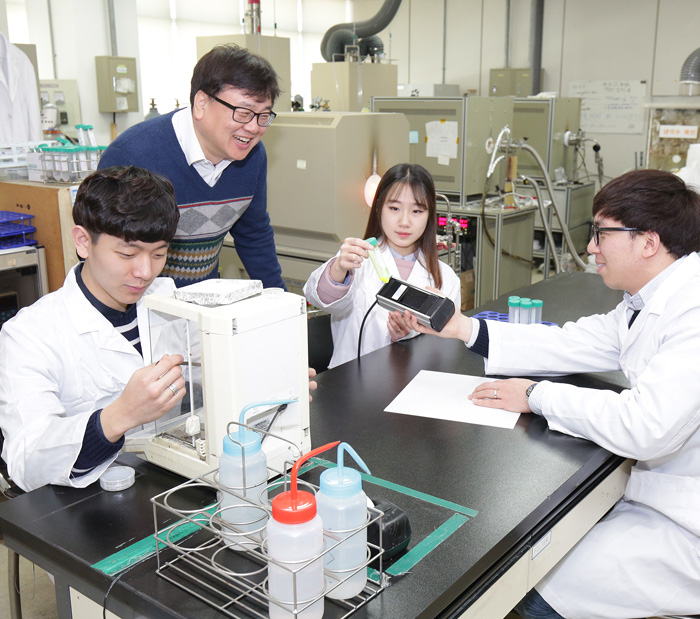Research Stories
Production of Nanoparticle & Fabrication of New Materials by Controlling Multifunctional Structure
Long-term stable stacked CsPbBr3 quantum dot films for highly efficient white light generation in LEDs.
Advanced Materials Science and Engineering
Prof.
YOON, DAEHO
1. Long-term stable stacked CsPbBr3 quantum dot films for highly efficient white light generation in LEDs.
In recent years, how to express colors more vividly and naturally has been raised as a major issue among researchers in the field of display.
Producing colors is decided according to the light emitting spectrum of each light emitting diodes (LEDs) presenting red, green, blue. If the light emitting spectrum has narrow full width at half maximum (FWHM), the purity of light emitting material will be improved which can produce more vivid images close to the nature’s colors when applying to display. The research team proposed an efficient and simple method to improve the stability of CsPbBr3 perovskite QDs and developed highly efficient white LED. They successfully prepared fully inorganic CsPbBr3 perovskite QD films as the green-emitting luminescence material for white light generation. This article was published in 2016’s November edition of the world renowned scientific journal, Nanoscale.
2. Mesoporous Ni–Fe oxide multi-composite hollow nanocages for efficient electrocatalytic water oxidation reactions
As a clean and sustainable technique, electrochemical water splitting could supply a large-scale hydrogen source.
The anode reaction, namely the oxygen evolution reaction (OER) is one of the main steps in electrochemical water splitting. Using a simple two-step hydrothermal method and calcination process, the research team demonstrated the synthesis of mesoporous NiO/NiFe2O4 multi-composite hollow NCs via Ni3[Fe(CN)6]2 PBA nanocube precursors. Such mesoporous NiO/NiFe2O4 multi-composite hollow NCs after 1h of calcination in air at 500°C demonstrate enhanced OER activity with a remarkably low Tafel slope (58.5 mV dec-1), a low over potential of 303 mV at a current density of 10 mA cm2, and excellent cycling stability in alkaline electrolytes, superior to most reported hierarchical structures of binary transition metal oxides/hydroxides. This article was published in the Journal of Materials Chemistry A on 2017’s Feb. 28th.

